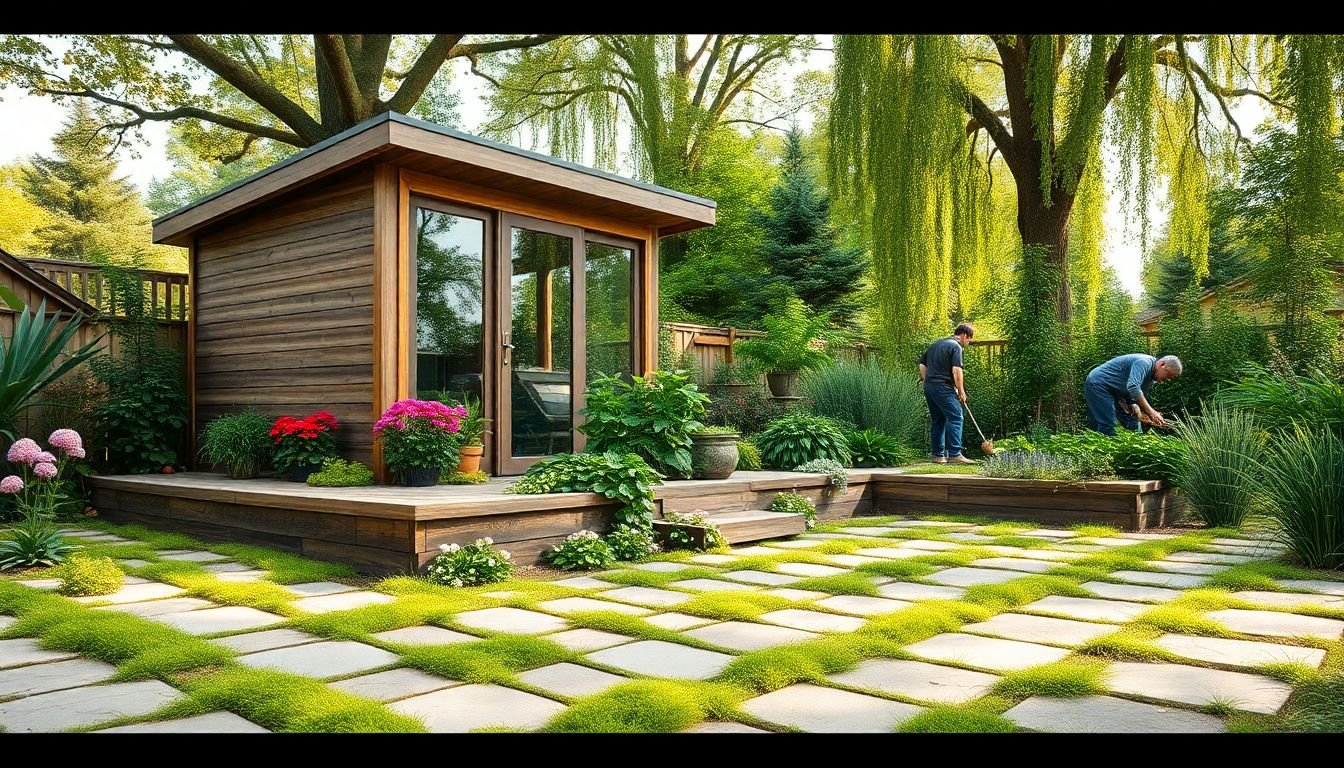In today’s environmentally aware society, every square foot of land offers a chance for sustainable living—even the ground under your garden shed. Purely for structural support, shed bases have traditionally been made using timber frames or concrete slabs. But what if this apparently useless area might be used to make your garden ecosystem vibrant? Garden-integrated Shed Bases enter the picture as a clever combination of use and ecology.
What Is A Garden-Integrated Shed Base?
Designed not only to support your shed but also to encourage plant growth, biodiversity, and better water management underneath or around the structure, a garden-integrated shed base is found. Instead of walling off the planet, it uses green borders, soil beds, or permeable materials to integrate living systems so that nature may flourish even in concealed or shaded environments.
This strategy sees the interaction between constructed materials and the environment differently, transforming a basic shed into a collaborator for the health of your garden.
Types Of Garden-Integrated Bases
There are several innovative approaches to integrating garden-friendly elements into shed bases. Here are a few:
1. Permeable Pavers
These let water reach the ground beneath, therefore lowering runoff and boosting groundwater recharge. Patterns with gaps filled with gravel, moss, or ground cover plants can be created using permeable pavers.
2. Gravel Grids With Green Insets
These modular systems allow for planting while simultaneously holding gravel in place. They let plant roots reach sunlight and moisture while also giving the shed some stability.
3. Raised Beds Around The Base
By raising garden beds around your shed foundation, you make the edge useful area for flowers, vegetables, or pollinator-friendly plants. By offering shade and wind protection, the shed helps to establish a small climate in which some plants could flourish.
4. Green Roof Sheds With Integrated Drainage
Although not technically part of the foundation, including green roofs and linked rainwater systems lets extra runoff feed nearby plant beds at the base. This open loop system helps local plants and lowers trash.
5. Living Mulch Floors
For sheds with open or elevated flooring, think about letting some low-light groundcovers or mosses grow beneath. These offer insulation, aid in dust reduction, and help soil stabilize.
Benefits Beyond Aesthetics
Although a shed base integrated into a garden aesthetically enhances the space, it also offers real environmental and pragmatic advantages:
Improved Drainage: Better drainage results from permeable materials, which lowers runoff and pooling that might harm surrounding plants as well as the shed.
Increased Biodiversity: Even a little piece of live soil can sustain worms, insects, fungi, and other helpful species.
Climate Moderation: Green features surrounding the base assist to moderate soil temperature and humidity, therefore enhancing the garden ecosystem.
Improved Utility: Especially in small or urban gardens, raised beds and border gardens maximize constrained space.
Considerations For Setup
Should you want to put a garden-integrated base, several factors should be noted:
Weight and Stability: The shed still requires a solid, even foundation. Make sure any green components preserve structural integrity.
Plant Selection: Select shade-tolerant, shallow-rooted, or low-growing plants close to the base to prevent damage or obstruction.
Pest Management: Green zones can draw beneficial as well as damaging creatures. Select plants and materials that repel undesirable bugs.
Access and Maintenance: Arrange your layout so the base may be easily inspected or cleaned should need.
A Greener Future Starts Underfoot
Although they are small, garden-integrated shed bases mean fully contribute to more environmentally friendly gardening techniques. Rethinking underlying issues helps us to support greener backyards, more robust ecosystems, and better soils.
Whether you’re renovating an old shed or constructing a new one, think about creating a base that returns to nature. At times, the best place to cultivate green is precisely where we least expect it—underfoot.
